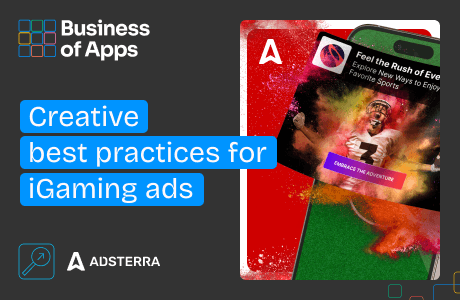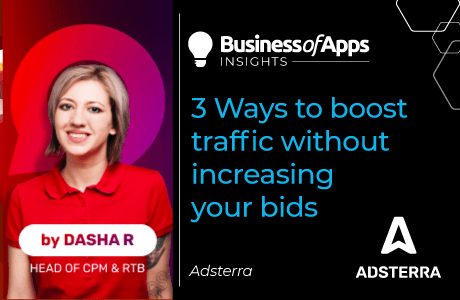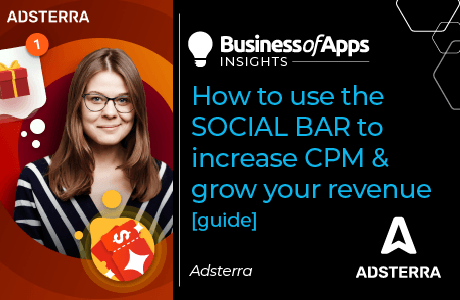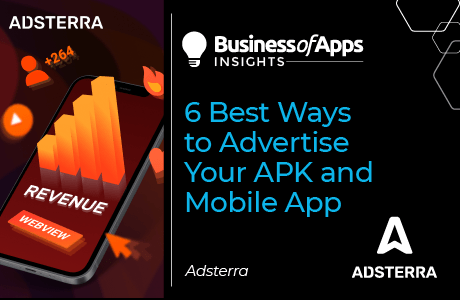When you need to expand your business presence on the internet, you have two choices: organic growth or paid advertising. Organic growth means people find you naturally through social media content and when your website appears in search results. With paid ads, you place your message right where potential customers will see it.
The difference is that, rather than spending several months hoping your content will appear naturally on Google or gain attention on social media, paid advertising lets people see your business right away. Your company’s name and message could appear at the very beginning of search results or within social media feeds by tomorrow.
What is paid advertising?
Paid advertising is a direct approach: you spend money to show your advertisements to specific groups of people. These advertisements appear on different internet platforms, such as search engines, social media, and websites. Companies previously used TV and radio for paid advertisements, but most advertising now occurs on the internet.
The process works similarly to an auction house. When you start paid advertising campaigns, you compete with other businesses to purchase advertising space. However, there’s an interesting detail: offering the most money doesn’t guarantee success. The advertising platforms examine both the amount you’re willing to pay and the quality of your advertisement. If people find your ad more useful and interesting, you might receive better placement even if you spend less money.
The importance of paid advertising and its benefits
Paid advertising stands out because it’s both precise and quick. You decide who views your advertisements, when they appear, and how much you want to spend reaching these viewers. For instance, if your business sells athletic shoes, you can specifically show your ads to people who recently searched for “comfortable running shoes for beginners” or who follow social media accounts about running.
Factors that impact the reach of paid ads
Source: Semrush
Paid advertising has three key advantages:
Performance
Paid advertising shows precise results immediately. As soon as you begin a campaign, you see numbers showing how many people looked at your ad, clicked on it, and bought something. For example, spending about $12 on Facebook lets you reach 1,000 people — a straightforward way to track your spending. This quick information helps you make better decisions about your advertising approach based on actual numbers.
Engagement
Paid advertising systems excel at finding people who might want your products. If you sell kitchen equipment, you can show your ads to people who enjoy watching cooking videos, following professional chefs, or searching for cooking ingredients. This means your ads reach people who are actually interested in cooking equipment instead of random internet users.
Optimization
Paid advertising lets you make careful improvements over time. Your first advertisement might not work perfectly, but the detailed information shows you what needs to be changed. You might learn that people respond better to morning advertisements than evening ones, or that specific pictures get more attention. This lets you improve your approach based on people’s behavior rather than making educated guesses.
Types of paid advertising
Paid advertising takes several forms, and each serves its own purpose. Just as a carpenter selects specific tools for different projects, choosing the appropriate type of advertisement affects your final results. Here’s a simple explanation of the main types of ads and their benefits.
Click-based (CPC) advertising
Cost per click (CPC) represents the most basic type of paid advertising — you only spend money when someone clicks on your advertisement. It’s similar to paying for actual customer interest instead of just showing your ad to random people. For these advertisements, you choose the highest amount you want to spend for each click, perhaps $2, and that’s your limit. The nice part is that you often pay less than your limit because advertising platforms give better prices to advertisements that people find useful and relevant.
Search advertising is a common example. Your advertisement appears when people search for words related to what you sell. For example, if you have a running shoe store, your advertisement will show up when someone searches for “best running shoes for beginners”.
Banner advertising
Banner ads are like modern-day billboards for websites, and they are an essential part of paid advertisements. These images appear on websites, apps, and other internet platforms, usually positioned at the edges, tops, or bottoms of web pages. Banner ads work well because they can be placed on websites where potential customers already spend their time, which helps people remember your brand and visit your website.
These advertisements are priced based on the number of people who see them rather than the number who click on them, making them effective in helping people recognize your brand. For example, showing your banner ad to 1,000 people on websites your potential customers visit might cost around $12.
Video marketing
Video advertisements allow you to show how your product or service works. Although they are not the main focus of most paid advertising campaigns, videos can strengthen your other advertising methods. Your video needs to catch viewers’ attention within the first three seconds. These advertisements work particularly well when you need to demonstrate how something functions or want to create an emotional connection with viewers. The catch is that making videos typically costs more than creating regular advertisements with images and text.
Retargeting
Retargeting helps you stay connected with people who have already visited your website. While it supports your main paid advertising efforts, retargeting maintains contact with potential customers who looked at your website but didn’t buy anything. As these people browse other websites, your advertisements remind them about your products or services, making them more likely to return and make a purchase.
Paid advertising channels
Paid advertising works on several internet platforms, and each platform attracts different people and uses different methods to show advertisements. Two companies, Google and Meta, receive almost half of all the money spent on internet advertisements. However, these companies represent only a fraction of the available options.
Google Ads
Google Ads is the most widely used paid ad platform, and for good reason. Beyond search ads, it offers display and YouTube options. Its biggest strength lies in tracking: Google Analytics and Tag Manager integrate seamlessly, showing clicks, site visits, and how much revenue your ads generate.
Microsoft Advertising
Microsoft Advertising powers the second-largest search network, covering Bing, Yahoo, and DuckDuckGo. Advertisers often pay 10 to 30 percent less per click than on Google, with less keyword competition. It reaches a different audience, often older users, and offers targeting tools similar to Google’s.
LinkedIn Ads
LinkedIn’s advertising focuses on business connections. Unlike platforms based on interests or searches, you can target specific job titles, company sizes, and industries. While ad costs are higher, the ability to reach decision-makers makes it ideal for promoting business-related products like software to tech managers at large companies.
Meta Ads (Facebook and Instagram)
Meta shows ads based on user behavior, interests, and demographics — not search terms. With over 3.29 billion daily users, its tracking tools reveal exactly how people interact with your ads. If you sell tennis gear, for instance, you can target fans of tennis content or athletes.
X (Twitter) Ads
X focuses on real-time conversations and trends. Ads appear in users’ feeds alongside regular posts, letting you connect with current events or trending topics. Though its audience is smaller, X is effective for time-sensitive promotions and news-driven campaigns.
eBay Advertising
eBay ads run within its shopping platform, promoting your products to users already browsing. The system uses buying behavior to show ads for similar items, shortening the path from interest to purchase.
Paid advertising step-by-step
Many paid advertising campaigns don’t succeed because people start advertising without proper planning. They waste money by showing advertisements to the wrong people or using incorrect settings.
Here’s a clear explanation of how to create advertisements that work well and earn back the money you spend.
Utilizing paid advertising to reach your niche audience
Source: Adsterra
Identify your goals
When creating a paid advertising plan, start by deciding what you want to achieve. Simply saying you want to “sell more” isn’t specific enough to help you succeed. Think about the exact numbers you can measure. People who advertise well use something called SMART goals: specific, measurable, actionable, relevant, and time-bound.
Instead of saying, “Find more customers,” make your goal more precise, like “Get 50 new email subscribers through paid ads by spending $5 for each new person within 30 days.” This gives you real numbers to track and helps you understand whether your advertisements work properly.
Know your target audience
Your paid ads should connect with people who are most interested in buying what you sell. Don’t make random guesses about who might want your products. Look at the people who already buy from you — their age, location, preferences, and how they found your business. This helps you create advertisements that speak to them personally. Study your customer information to understand them better:
- Which people spend the most money with you?
- What time of day or year do they buy?
- What difficulties do your products help them solve?
This information helps you choose the right words and pictures for your advertisements.
Calculate your budget
Your paid advertising spending should match what you hope to achieve and earn. Begin by calculating how much money each customer brings to your business. For example, if you earn $1,000 from each customer, and you usually turn 20% of interested people into customers, you can spend up to $200 per interested person ($1,000 × 20%) without losing money. This simple math keeps your advertising profitable and stops you from spending too much on clicks that don’t become sales.
Launch paid ads
Before starting your advertisements, make sure you can evaluate their results properly. Each advertising platform provides tools for tracking the performance of your ads. For example, Meta’s Ads Manager monitors Facebook and Instagram ads, while Google Analytics tracks search and display advertisements.
Start with a small test budget, about $5 to $10 each day, to learn what works without spending much money. The advertising platforms want your advertisements to work well (because then you’ll buy more advertising), so they provide detailed instructions. First, ensure you can track everything properly — without tracking, you won’t know if your advertisements work.
Tracking paid advertising results
Numbers show whether your paid ads help your business or waste your money. Pay attention to these crucial measurements, and understand how each one affects your business:
- Click-through rate (CTR): shows if people want to click on your advertisements
- Conversion rate: tells you if your website convinces visitors to take action
- Cost per click (CPC): helps you control how much you spend
- Cost per conversion (or cost per acquisition, CPA): reveals the actual cost of getting results
- Lifetime value (LTV): shows how much money you make from customers over time
Each measurement points to specific areas for improvement. For example, if few people click on your ad, it might not be reaching the right audience. Similarly, if acquiring new customers costs too much, your website might need improvements.
Conclusion
Paid advertising lets you choose exactly who sees your advertisements and when they appear. While regular marketing through social media and websites needs time to grow, paid ads can immediately bring people to your website. Your success depends on learning how each advertising platform functions and selecting methods that help you reach your goals.
When starting your first paid advertising campaigns, remember that you’ll do well by carefully choosing who sees your ads and monitoring how they perform. Begin with a small amount of money, try different advertising approaches, and learn from the results you see. Your first advertisements might need some improvements, but each time you run them, you learn something new about the people you want to reach and what makes them interested in your offers.
Start promoting your brand or offer using high-quality traffic with Adsterra.












